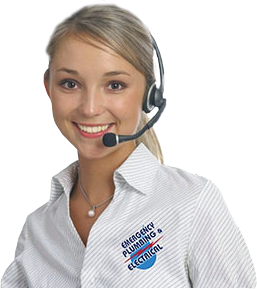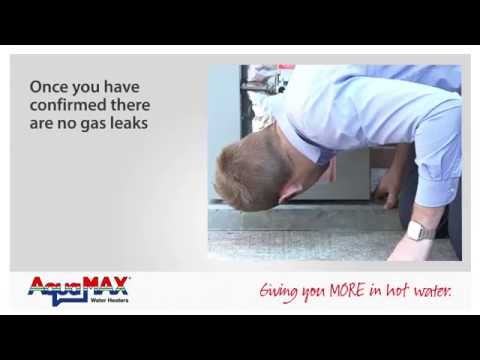Do you need a fast, reliable emergency plumber?
The experts at Inline Plumbing provide efficient, high-quality emergency plumbing services to homes in Sydney, Central Coast, Newcastle, Wollongong, ACT, and surrounding areas. Just give us a call on 1300 INLINE (1300 465 463)
An Inline emergency plumber is currently on standby
The emergency plumbers at Inline Plumbing are on standby 24/7 and are ready to attend to any urgent plumbing needs.
With over 25 years of experience, our emergency plumbers can deal with the full range of plumbing and electrical services quickly and professionally. When it comes to plumbing emergencies, no challenge is too big or too small – we’ve seen it all and have never had a plumbing problem we couldn’t fix.
Whether its clearing blocked drains, repairing or replacing hot water systems, fixing leaking toilets, taps and showers, fixing leaking pipes and broken water pipe repair (just to name a few) we will ensure you have an emergency plumber fixing your problem ASAP.
Your local emergency plumbing company
With emergency plumbers located across Sydney and beyond, we are able to attend to your emergencies promptly.
Some of our service areas include:
- ACT
- Blue Mountains
- Campbelltown
- Central Coast
- Eastern Suburbs
- Hills District
- Inner West
- Newcastle
- North Shore
- Northern Beaches
- Northern Districts
- South West Sydney
- Southern Sydney
- Sydney
- Western Sydney
- Wollongong
Why trust Inline Plumbing with your emergency plumbing?
Inline Plumbing is a well-known and highly regarded Sydney Plumbing company. Our plumbers are fully licensed, experienced, fast, friendly and are experts in solving your plumbing problem.
We also pride ourselves on being experienced and professional while providing the best service and satisfaction to our customers.
We have:
- EXPERIENCED OFFICE STAFF who can determine problem and provide accurate quotes over phone.
- EXPERIENCED PLUMBERS & ELECTRICIANS who specialise in their key area, whether it be hot water, blocked drains, toilets, taps, broken pipes, gas or electrical services.
- HONEST PRICING for all types of emergency plumbing work.
- LOYAL CUSTOMERS with over 60% of our business coming from our thousands of return customers.
Why have a trusted emergency plumber on standby?
There are many different reasons as to why you would need to call a plumber after hours. Whether it’s a burst pipe in the middle of the night or a blocked sewer drain during a big family event, having a trusted, reliable emergency plumber on call is a must.
It’s important to have a plan as to who you can call when these situations arise. By doing your research early on – when there’s no emergency – and keeping the number of an emergency plumber on hand, you’ll save yourself a whole lot of time, stress and money when an emergency eventually does arise.
So, it’s a good idea to make sure your plumber will always be readily available to do any urgent work. A quality after-hours plumber can come as a godsend for whenever that plumbing emergency pops up at an inconvenient time.
Our fast & reliable 24/7 emergency plumbers
The team at Inline Plumbing offer incredibly fast response & onsite arrival times with no hidden and surprise fees. Call us now on 1300 465 463 to co-ordinate an emergency plumber to fix your problem.
We are available 7 days a week and 24 hours a day, covering fully the Sydney metropolitan area, the Central Coast, Newcastle, Wollongong and beyond.
Our experienced and professional team of 24/7emergency plumbers are on call for:
- Hot water heater repairs/replacements
- Leaking or broken pipes
- Household appliance repairs & gas leaks
- Clogged drains, clogged toilets, and blocked waste pipes
- Leaking toilets, dripping taps
- Plus other emergency plumbing situations that might occur
Common reasons to call an emergency plumber
No hot water
Having no hot water can be extremely frustrating for anyone, especially during winter or if you have a family with kids. In any event, you will want to get your hot water back on as soon as possible. Whether you have an electric, gas, instantaneous or heat pump hot water system, one of the emergency plumbers from Inline Plumbing can come to your place and quickly inspect, test and repair the water heater.
Blocked sewer drain
Another plumbing problem that will require your plumber’s assistance is a blocked sewer drain. It is common practice to use a high-pressure water jetter, a machine that can clear virtually any drain blockage. These drain jetters, with their turbocharged cutting heads, also often come equipped with a CCTV camera.
Broken water pipe
We all know the stress and frustration of having a broken water pipe. Your emergency plumber will be able to promptly fix the problem and test for any leaks. Providing the job has been completed successfully, your plumber should detect that there are no further leaks coming from the welded pipe.
Emergency hot water system replacement & repair
Regardless of the type of hot water system, the unit will tend to begin leaking after approximately 10 years. If you’re experiencing problems with your hot water system, get in touch with Inline Plumbing and we’ll be able to send out one of our emergency plumbers to repair or replace the unit.
If your hot water systems have packed it in, we can advise you if your hot water tank can be repaired cheaply or if the whole hot water heater unit needs to be replaced.
When thinking about a new hot water unit the team at Inline Plumbing aim to provide you with the most ideal hot water system solution for your household needs. The majority of hot water heater tanks are run on gas or electricity, with each hot water system having their different positives and negatives.
If it happens that a new hot water tank is needed in an after-hours call out and all suppliers are closed, Inline Plumbing will install a temporary hot water unit, which we carry on our fully stocked company vehicles.
Leaking toilet cistern
A leaking toilet cistern is yet another annoying plumbing situation which can be easily rectified by your emergency plumber. The most common repair to a leaking toilet cistern would be to have the inlet valve, flexi pipe and outlet washer replaced. This is usually the case when there is a leak into the toilet pan.
You may also be confronted by a leak coming from behind the toilet, going onto the bathroom floor. This is where you may need for the flush-cone to be replaced, which may have perished.
Regardless of the problem, your Inline emergency plumber will be able to assess the leak and advise you as to what needs doing.
How to avoid a plumbing emergency
Often, experiencing a plumbing emergency is something that’s totally beyond our control. In some cases, however, plumbing emergencies can be prevented. Here are some simple steps you can take to help prevent a plumbing emergency.
Safeguard against frozen pipes
When cold weather hits town, it is time to disconnect any hoses from your outside taps. Water in hoses is likely to freeze and expand which can potentially cause taps and connecting pipes to also freeze and break. This is particularly the case in the colder areas of Australia such as ACT.
By rolling up any garden hoses and storing them for the winter, you may potentially be able to help prevent unexpected emergency plumbing repairs.
Preventing a blocked toilet
When your toilet is not flushing properly, it is important to identify and isolate the problem quickly. Getting on top of it straight away may prevent the problem from becoming more serious. Depending on the problem, you may be able to fix the toilet yourself before you call in an emergency plumbing service. However, a serious toilet flushing problem will require the professional services of an experienced plumber and attempting to fix it yourself may cause more issues.
If you’re unsure about whether or not you need to hire an emergency plumber for your blocked toilet, call Inline Plumbing on 1300 465 463 and one of our experts will be able to offer advice.
To prevent a blocked toilet, it’s important to clean it regularly and avoid flushing any non-flushable items.
Preventing blocked drains
Do not put cooking oils, grease, fat or food scraps down the kitchen drain, as they’ll create a build-up in the pipes. Correctly dispose of these items in the bin or compost.
Drain and sink strainers can be a useful tool that will catch hair, food and other debris before they go down the drain and become clumped.
By understanding what you can and can not throw or flush down the toilet or sink, you can save yourself from costly repairs.
Contact the Inline emergency plumbing experts today
If you want a team of emergency plumbers you can trust, don’t hesitate to get in contact with the experts at Inline Plumbing today. We will be able to provide you with fast, efficient and reliable service no matter what the problem.
Call Inline Plumbing today on 1300 465 463 and experience our exceptional emergency plumbing services!





